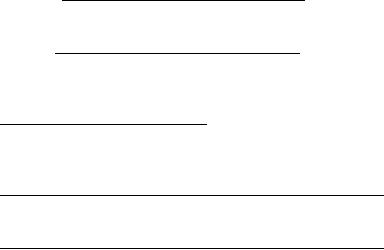
prohibit the use of the "L" configuration, a 180
meeting military specification requirements have
or "U" configuration may be used. The 90 "L
the specification number, class of fitting (where
and 180 "U" configurations are shown as
applicable), type, size, and manufacturer's
trademark.
sketches A and B of figure 6-36.
A cross index between the manufacturers'
A configuration that uses a single length of
designations and military specifications and
hose bent to about 90 is approved where the hose
information to correctly identify approved hoses
and fittings can be found in Piping Devices,
does not bend below its specified minimum
Flexible Hose Assemblies, volume 1, NAVSEA
bending radius when the equipment moves to the
maximum limits allowed by its mounts (view A
S6430-AE-TED-010.
of fig. 6-37). The straight single hose con-
figuration and the 180 single hose bend (view B
Inspection of Hose and Fittings
of fig. 6-37) are also approved for use where the
Prior To Make-Up
hose size is less than 1 inch ID.
The basic inspection methods for hose and
Flexible connections that use rubber hose are
fittings are listed as follows:
not used in systems where the maximum con-
1. Ensure that the hose and couplings are the
tinuous operating temperature is in excess of
correct ones for the intended use and
200F.
that the age of the rubber hose does not
exceed a shelf life of 4 years. Teflon and
metal hose have no limiting shelf life.
Hose Identification
2. Inspect for signs that the hose has been
twisted. Use the hose lay line for a guide
Hose is identified by the manufacturer's part
to determine whether or not any twist is
number and the size or dash number. The dash
present. If twisted, reject.
number is the nominal hose inside diameter in six-
3. Inspect for signs that the hose has been
teenths of an inch. Hose built to military
kinked or bent beyond its minimum bend
specification (MILSPEC) requirements have the
radius. If suspect, reject.
number of the specification and, where applicable,
4. Inspect for signs of loose inner liner. If
the class of hose, the quarter and year of
found, cut the-hose to see if this condition
manufacture, and the manufacturer's trade-
exists throughout the entire length. If
mark. This information is molded or otherwise
suspect, reject.
permanently repeated periodically on the hose
5. Visually check the inner liner and outer
cover (sometimes referred to as the "lay line
rubber cover of the hose for breaks,
marking"). Other information permanently
hairline cuts, or severe abrasions. If
marked on the hose cover is the manufacturer's
any suspect areas are found, reject.
c o d e and the date of manufacture. For
6. Inspect the fittings for defects, such
interpretations of commercial lay line markings,
as cracked nipples and damaged threads.
refer to the appropriate manufacturer's catalog
If suspect, or if defects are found, reject.
or manual.
Procedures for making up hoses and fittings
can also be found in the Naval Ships' Technical
Fitting Identification
Manual, chapter 505, or the appropriate
manufacturer's catalog or manual, and are not
Use special care in identifying hose fittings
covered here due to the many types available.
because their designation is more complex than
hose. A fitting suitable for connecting to a given
Visual Inspection
hose size can end in more than one size and type
of connection to the piping. A fitting, therefore,
After assembling the hose and fittings, visually
must be identified by the manufacturer's part
inspect the entire configuration to ensure the
number, the size of the end connection that
following:
joins the piping system, and the dash size
1. The hose inner liner and outer cover is
to show the size hose to which it makes up. For
intact and contains no cuts or harmful
interpretation of manufacturer markings, consult
abrasions.
the appropriate manufacturer's manual. Fittings
6-26

